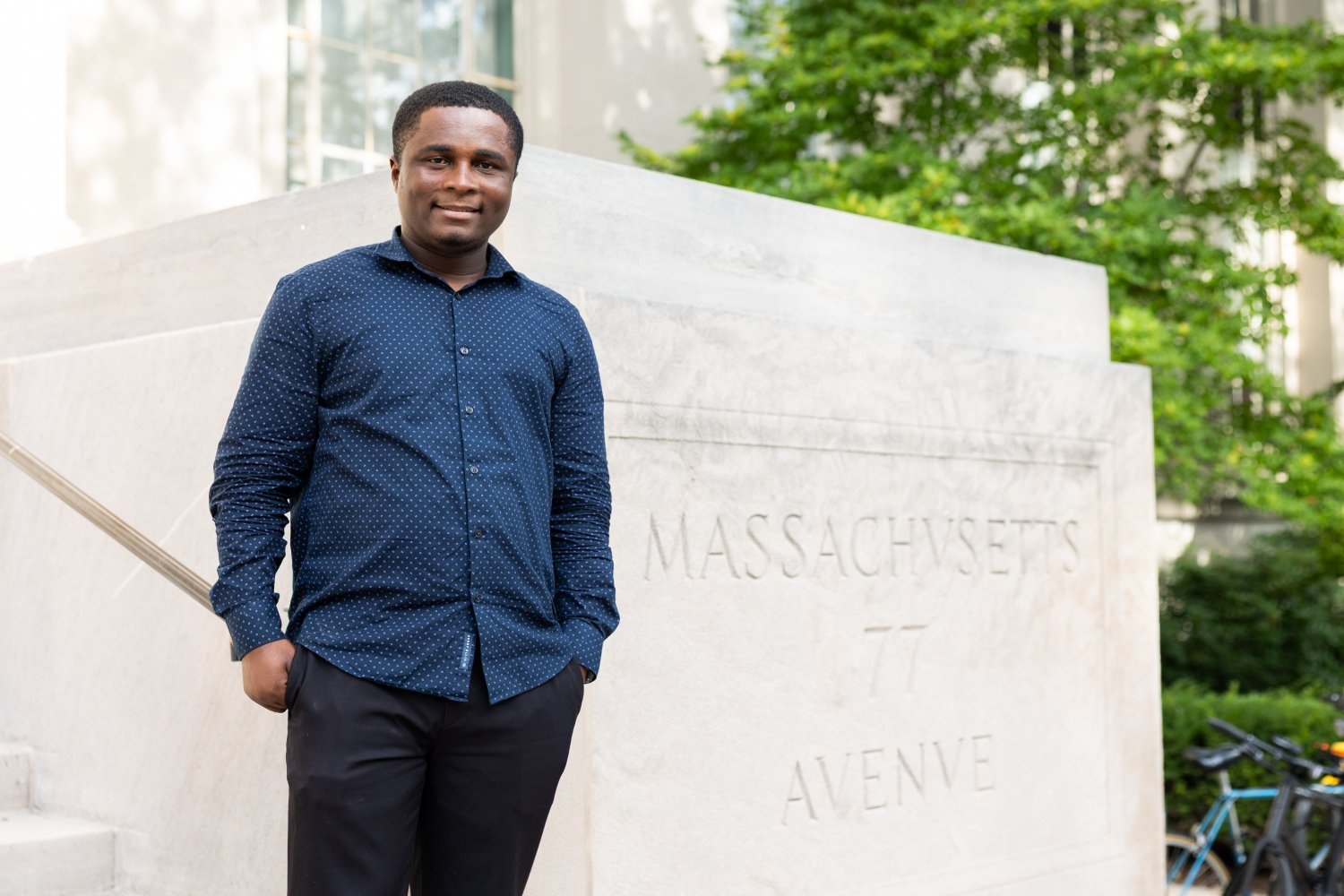Chenru Duan “always has room for another project”
PhD candidate receives multiple honors for work integrating machine learning towards improving quantum chemistry calculation workflows.
Chenru Duan is a PhD student in the Chemistry department and a member of the Kulik Group in Chemical Engineering, advised by Associate Professor Heather J. Kulik. He describes his work in the Kulik group as the boundary of applied math and chemistry; inadvertently echoing his own trajectory within the cross-sections of physics, chemistry, and engineering as he finds recognition by leading academic societies of multiple fields.
Within the last six months, Duan received a Gold Award from the Materials Research Society (MRS); a graduate student award from the Computational Molecular Science and Engineering Forum (CoMSEF) of the American Institute of Chemical Engineers (AIChE); a fellowship from the Molecular Sciences Software Institute (MolSSI), supported by the National Science Foundation; and will be presented with a Chemical Computing Group (CCG) Excellence Award for Graduate Students by the American Chemical Society (ACS) this spring.
Duan’s research belongs to the realm of theoretical and computational chemistry, a branch of chemistry that aims to solve complex chemical problems using computer simulations. His current work, written up for a final thesis, integrates machine learning techniques into existing workflows for high throughput computation powered by quantum chemistry calculations, aimed at increasing efficiency and accuracy of chemical discovery.
As a teenager, Duan competed in the Chinese Physics Olympiad before studying for an undergraduate degree in physics from Zhejiang University in Hangzhou, China. “My physics background shaped how I think things from a fundamental perspective and prepared me for the computational research I’m doing today,” says Duan. “The transition to chemistry when I joined grad school was natural. I wanted to do something that had more relevance to real life, and machine learning and computing power were rising at that time.”
At MIT, Duan joined the Kulik Group intending to explore redox flow batteries and use machine learning to discover new materials. However, in the first three months, he found that up to half of their calculations failed due to various practical challenges, a not uncommon occurrence.
Here came another transition: Duan’s new and immediately useful goal would be to save graduate students valuable time. As a single calculation could take 24 GPU (graphics processing unit) hours—plus energy costs and setup time—only to fail; there had to be a way to use machine learning models to predict the potential success of a given calculation within seconds.
Theoretically, if you can identify systematic behavior, you can develop a set of statistical models to forecast the failure and level of accuracy of a calculation. Duan’s model uses dynamic control and virtual adversarial training, a very transferable and newly proposed method within the computer science community to improve the robustness of model predictions in semi-supervised settings, where data gathered using existing methods agree only at the extrema of distributions, leaving much unknown.
“Imagine the calculation has a trajectory that we go through step-by-step. We use a machine learning model as an extra layer through the steps to predict failure/success probability and found that we can save more than half the time that would have been wasted,” says Duan. “Now you can do 1.5 projects!”
Kulik, his advisor, says, “Many things impress me about Chenru, but I am particularly impressed by how he has managed to delve deep into electronic structure theory and machine learning on a very theoretical level but still to do so with the idea in mind of tackling real world applications. Everything he has developed in the group, he has done so that it could help others.”
Duan recalls Kulik sharing her own experience as a graduate student spending entire days on single calculations, in contrast to the thousands or millions that can be completed within the same time today with supercomputers.
But the increase in efficiency doesn’t mean Duan feels he can take it easy. More capability also means higher expectations of achievement. “Ten years ago, if you failed, you lost a day of work. But now, if you set up the computational workflow wrong, you could be wasting tens of thousands of GPU hours.”
Duan is making the most of his time left at MIT; with just months to graduation, he is working on four projects while trying to decide on a title for his thesis. Pre-pandemic, Duan hiked extensively with friends, covering almost all the hike-able trails in the neighborhoods around Boston, but has since learned to enjoy indoor pursuits like poker and mahjong.
Duan is ready for the next transition. He hopes to find a postdoctoral position where he can research and develop ways to improve fundamental methods in quantum chemistry. Clearly, he is just getting started.





